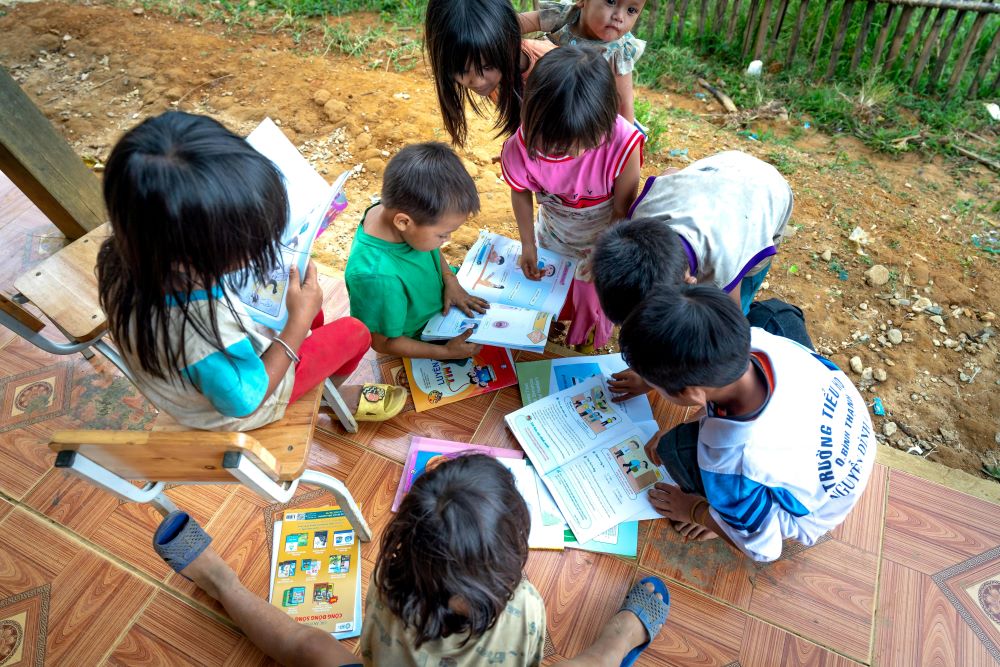As parents and teachers, we want our children’s early years to be filled with joy, discovery and growth. However, it can be challenging to keep learning engaging and prevent lessons from feeling like a chore. The key is seamlessly blending fun and education, making every moment a joyful opportunity for our little ones to explore. Here are some creative strategies to make learning fun for kids and keep them excited about learning while still meeting educational goals.
7 Easy Tips on How to Make Learning Fun for Kids
1. Hands-On Activities Spark Curiosity
Getting hands-on during learning time is one of the best ways to keep kids engaged. Children are natural explorers who love to touch, play and discover through their senses. Incorporate hands-on learning materials like play dough, modeling clay, blocks, puzzles and art supplies into lessons. For example, teach letter recognition through play dough letters your child can mold and reshape. Counting objects, sorting by colors or sizes, and patterning with blocks are stimulating math activities kids will love. Hands-on learning helps cement new concepts in young minds through active participation. It keeps them fully immersed in the learning process rather than getting bored or distracted.
2. Creative Storytelling in Nature
Nature adventures can provide enriching learning opportunities for children. The story of Little Sweet Pea Butter Bean in the book “And God Smiled” by Barbara Spangler shows how engaging with the outdoors in an imaginative way can spark a child’s curiosity. In the tale, a little boy named Tyler goes on an exploration through the golden oak forest with his new feathered friend. Together, they meet other inhabitants of the woodland and embark on a quest to save the surrounding lands. The narrative fosters the child’s curiosity about the environment, promoting skills such as observation, problem-solving, and empathy. Planting the seeds of environmental stewardship, it illustrates how incorporating enjoyable, nature-based activities into education can build a lifelong love of the outdoors.
3. Add Movement for an Energy Boost
Kids have constant energy to burn, and short attention spans when learning in traditional classroom settings. Incorporate movement into lessons to keep little learners energized and focused. For example, teach letters or numbers through movement-based songs and dances. Have kids act out stories with their whole bodies or go on “letter hunts” around the room. Math lessons become dynamic with activities such as hopping, jumping, or clapping to represent times tables or counting problems. Movement enhances learning by engaging multiple parts of the developing brain. It’s a fun, interactive way for kids to stay engaged in lessons and be active learners.
4. Turn Errands Into Educational Opportunities
Some of the most valuable learning happens outside the classroom during everyday routines. Grocery shopping, errands, family outings and mealtimes are perfect opportunities to seamlessly blend learning into daily life. Point out letters and their sounds on product labels. Count items as you shop or do household chores together. Read signs, identify shapes, count steps – these everyday moments shape developing young minds. Making learning an integrated part of routines keeps it lively instead of feeling like a separate chore. Kids don’t even realize they’re absorbing new skills through natural interactions and conversations. Turning daily activities into joyful learning adventures cultivates a lifelong love of learning.
5. Incorporate Favorite Characters and Stories
What engages kids more than their beloved characters, stories and toys? Use these to make learning exciting and foster a connection to new concepts. Teach letters through storybooks featuring favorite characters. Count toys or sort them into groups based on traits from shows and movies. Use character dolls or action figures to act out narratives that teach sequences, problem-solving and interpersonal skills. Incorporate songs and stories featuring numbers, science concepts or history into playtime. Linking lessons to beloved toys, shows, and books engages children’s imagination and curiosity. They can’t wait to learn more to deepen their experience of their favorite worlds.
6. Make Learning an Adventure
Kids naturally love adventures, exploration and discovery. This innate sense of wonder can be harnessed to create stimulating lessons dressed up as adventures. For example, orchestrate “nature hikes” through your backyard or neighborhood, pointing out plants, animals, shapes and colors along the way. Turn your play space into a “science laboratory” full of experiments to conduct. Design treasure maps with clues teaching letters, numbers or spatial concepts kids follow to find “buried treasure.” Use map-making as a geography lesson. Tap into kids’ innate adventure spirit to turn learning into an ongoing experience of discovery. This sparks curiosity in learning as an exciting journey.
7. Turn Boredom into Learning Challenges
Bored kids lose focus and motivation quickly. Aim to turn potential boredom into opportunities for developing problem-solving skills through “challenges.” For example, when stuck inside on a rainy day, issue scavenger hunts or obstacle courses indoors that teach new concepts through an engaging activity. Present math word problems that children must solve to proceed with their gameplay. Use creative building or crafting as problem-solving challenges that develop fine motor skills. By reframing downtime or restrictions as challenges requiring effort, persistence and learning new skills, you foster kids’ sense of achievement – and enthusiasm for learning.
“And God Smiled” by Barbara Spangler Is Available on Amazon
Keep these engaging strategies in your toolbox to blend playful fun with educational goals anytime, anywhere. Learning should feel like a joyful adventure for kids, not a chore, and their natural curiosity enables amazing growth. Why not take advantage of that by making every moment an opportunity for exploration and discovery?
“And God Smiled” by Barbara Spangler is the latest addition to kids’ books and a must-read to teach children about important themes like faith, kindness and hope. Order your copy now and let your kids explore storytelling with nature.
